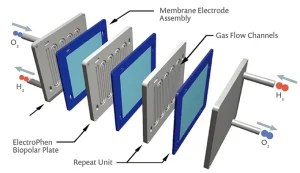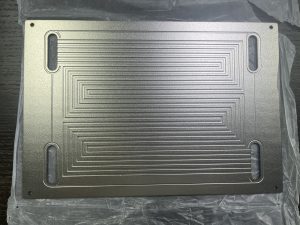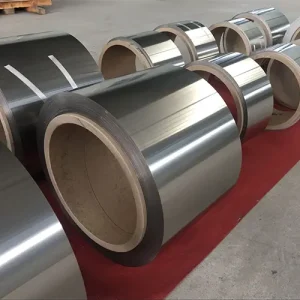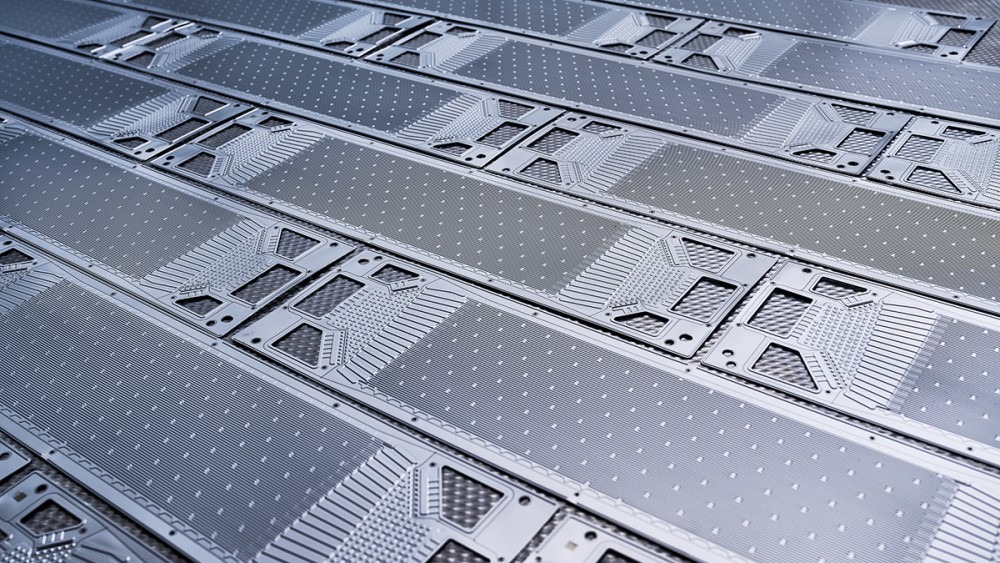The role of PEM electrolysis in green hydrogen production
With the increasing focus on green hydrogen, PEM water electrolysis is slowly becoming paramount, especially, because of the features that make it capable of handling conditions of renewable energy output. One of the essential components of PEM water electrolysis systems is the titanium plate which determines the cost of PEM electrolyzers to a considerable extent. The choice of production method for such plates has turned the making process into a major concern for manufacturers due to increased expenses and complexity.
Etching vs. Alternative Methods for Manufacturing PEM Titanium Plates
In the manufacturing process of PEM electrolyzers, plates can be produced using three main methods: Pressing; mechanical; and embossing among other processes such as cutting and engraving. Of all of these, etching has several advantages over the other techniques including the cost factor, accuracy, and versatility.
Benefits of Etching
The etching process cuts out the use of molds in production and affords customization and short turnaround times. This flexibility is particularly important in an industry where mass demand is still not so high, and designs might need to be changed more frequently.
Key Advantages of Etching:
Retention of Material Properties: While stamping acts by deforming metal, etching simply removes material from the workpiece while not changing its properties. This excludes cases where parts remain stressed, or contain heat-affected zones.

Enhanced Flow Channel Structure:
Etching enables the manufacture of intricate flow channel designs that would be unachievable with other methods thus providing the best fluid cooling and performance. Skills that may be out of reach for stamping or machining are easily accomplished with etching.
Cost Efficiency:
Compared to making use of molds which can be very pricey, etching creates the opportunity for the production of objects in their custom designs, hence being very cheap.
Comparative Analysis: Stamping vs. Etching
Stamping:
This process is done by making channels in the metal by the compression method. Although its simplicity of use makes it suitable for simple designs, the process is known to introduce stress and burr into the material.
Etching:
The etching employed here involves creating channels by cutting the material in a way that the material’s stability is not compromised and allows intricate designs on both sides of the titanium plate. These characteristics generally result in substantial cost reductions, as well as enhanced efficiency.

Precision and Thickness: Conquering Difficulties Related to Etching
A common problem associated with processing thick titanium parts using conventional techniques such as stamping or laser cutting is thermal deformation or material crushing. The etching process however is a lot less complicated than both processes and therefore addresses the challenges identified above.
TMN’s Expertise in Titanium Etching:
- Deep channels that are beyond 1.8mm deep.
- Tolerance control within ± 0.015mm.
- Accurate results for the intricate flow channel configuration.
Production Flexibility and Production Scalability
Flexibility is one of the attributes that make the etching process prominent and well-appreciated among the other etching techniques. TMN’s titanium plate etching can serve both high volume mass production type applications as well as small quantity quick turn around job requests. Overall, this capability guarantees good production through the variation in the production rates.
Key Features of Etching for PEM Plates:
- One can accommodate various thickness levels of the metal.
- The freedom of laying down very complex patterns, without concerns of spatial implications of using certain materials.
- Excellent flatness, achieving less than 1mm deviation in PEM titanium plates.
TMN Etching Factory: An Innovation Leader in Etching Solutions for Hydrogen Energy
Since 2020, TMN has been at the forefront of etching solutions for PEM titanium plates, dedicating itself to the development of hydrogen energy components. TMN is currently an ISO 9001 certified high-tech enterprise engaged in the business of metal etching.
Key Achievements:
- Over 60,000 etched PEM titanium plates were delivered.
- Third-generation etching solutions that can offer increased flow channel smoothness.
- Advanced production technologies for different types of plates.

Advancement Made in Etching Manufacturing by TMN metal parts fabrication factory
With nine etching production lines in its Dongguan factory, TMN has an annual production capacity of 2 million stainless steel plates and 50,000 PEM titanium plates. The company intends to grow in 2024 due to the continuous increment of the markets as mentioned above.
Hydrogen Energy Testing Laboratory:
In 2023, TMN has its own hydrogen energy testing platform and became the first company in the industry to bring in such high-tech inspection and data analysis equipment. This puts and end to fear and doubt in product quality and reliability in the market.
The Prospects of Etching in the Energy Method of Hydrogen
In the recent past TMN has recorded high growth in metal plate etching especially catering for increasing hydrogen energy needs. TMN being a valued supplier to industry’s front-runners in production of electrolyzers is committed to developing etching technology further.
The etching process is redefining the manufacturing of PEM titanium plates, offering unmatched precision, cost-efficiency, and flexibility. Given its considerable experience and fresh thinking on the topic, TMN is now at the forefront of etching solutions in the hydrogen energy sphere. In This ever-growing industry, etching will always play a vital role in the future, pushing down costs and improving performance.
FAQs
Why is etching preferred over stamping for PEM titanium plates?
Etching retains the material’s properties, allows for complex designs, and avoids issues like stress and burrs found in stamping.
Can etching handle different metal thicknesses?
Yes. Etching is highly adaptable to varying thicknesses, making it suitable for diverse applications.
What makes TMN a leader in PEM titanium plate etching?
TMN’s expertise, advanced production lines, and focus on innovation have positioned it as a top etching solution provider.
How does etching contribute to cost savings?
By eliminating mold costs and enabling faster design modifications, etching reduces production costs significantly.
What is the future of etching in hydrogen energy?
Etching will play a pivotal role in advancing hydrogen energy technologies by ensuring cost-efficient and high-quality component production.

